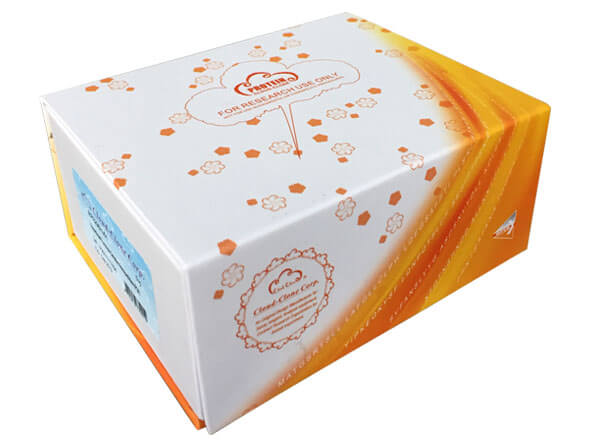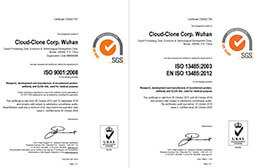Active Cluster Of Differentiation 5 (CD5)
Cat# APB798Hu61-10ug
Size : 10ug
Brand : USCN
Active Cluster Of Differentiation 5 (CD5)
T1; LEU1; Lymphocyte antigen T1/Leu-1
- Product No.APB798Hu61
- Organism SpeciesHomo sapiens (Human) Same name, Different species.
- Buffer FormulationPBS, pH7.4, containing 5% Trehalose.
- TraitsFreeze-dried powder
- Purity> 95%
- Isoelectric Point7.9
- ApplicationsCell culture; Activity Assays.
- Download Instruction Manual
- UOM 10µg50µg 200µg 1mg 5mg
ACTIVITY TEST of the Active Cluster Of Differentiation 5 (CD5)

Cluster Of Differentiation 5 (CD5) is a cluster of differentiation found on a subset of IgM-secreting B cells called B-1 cells, and also on T cells. B-1 cells have limited diversity of their B-cell receptor due to their lack of the enzyme terminal deoxynucleotidyl transferase (TdT) and are potentially self-reactive. CD5 serves to mitigate activating signals from the BCR so that the B-1 cells can only be activated by a very strong stimuli (such as bacterial proteins) and not by normal tissue proteins. CD5 was used as a T-cell marker until monoclonal antibodies against CD3 were developed. In humans, the gene is located on the long arm of chromosome 11. T cells express higher levels of CD5 than B cells. CD5 is upregulated on T cells upon strong activation. Cluster Of Differentiation 19 (CD19) has a remarkably high affinity for CD5, thus a functional binding ELISA assay was conducted to detect the interaction of recombinant human CD5 and recombinant mouse CD19. Briefly, biotin-linked CD5 were diluted serially in PBS, with 0.01% BSA (pH 7.4). Duplicate samples of 100 ul were then transferred to CD19-coated microtiter wells and incubated for 1h at 37℃. Wells were washed with PBST 3 times and incubation with Streptavidin-HRP for 30min, then wells were aspirated and washed 5 times. With the addition of substrate solution, wells were incubated 15-25 minutes at 37℃. Finally, add 50 µl stop solution to the wells and read at 450 nm immediately. The binding activity of recombinant human CD5 and recombinant mouse CD19 was shown in Figure 1, the EC50 for this effect is 10.6 ug/mL.
USAGE of the Active Cluster Of Differentiation 5 (CD5)
Reconstitute in 10mM PBS (pH7.4) to a concentration of 0.1-1.0 mg/mL. Do not vortex.
STORAGE of the Active Cluster Of Differentiation 5 (CD5)
Avoid repeated freeze/thaw cycles. Store at 2-8°C for one month. Aliquot and store at -80°C for 12 months.
STABILITY of the Active Cluster Of Differentiation 5 (CD5)
The thermal stability is described by the loss rate. The loss rate was determined by accelerated thermal degradation test, that is, incubate the protein at 37°C for 48h, and no obvious degradation and precipitation were observed. The loss rate is less than 5% within the expiration date under appropriate storage condition.






